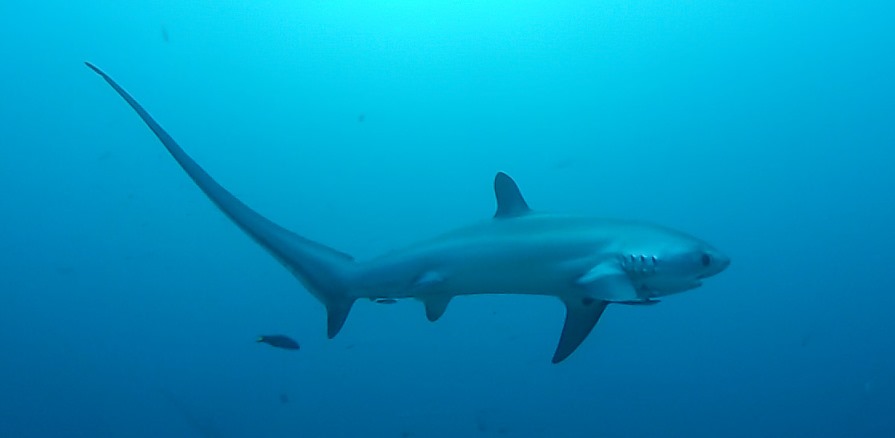In the August 15, 2016 issue of REVITALIZATION, we featured an article about how whale sharks were revitalizing the town of Donsol in the Philippines.
Local fishermen were boosting their income in a very sustainable manner by using their boats to ferry snorkelers and divers out to see the beautiful, gentle giants.
Now, here’s a story of how a different species of shark, the thresher, is helping to revitalize a typhoon-devastated Philippine town.
On November 8, 2013, the Philippines was struck by the deadliest typhoon in recorded history: Typhoon Haiyan, which killed over 6000 people.
Malapascua, a small island resort that lay right in Haiyan’s path, was particularly hard-hit. Buildings were flattened, fishing boats annihilated, and all power and communications lost. To most, it seemed that this once-popular tourist destination was finished. But all hope was not lost: Malapascua still had its thresher sharks.
Pelagic schooling fish (such as bluefish, juvenile tuna, and mackerel), squid and cuttlefish are the primary food items of the thresher sharks. They are known to follow large schools of fish into shallow waters. Crustaceans and occasionally seabirds are also taken.
Thresher sharks are solitary creatures which keep to themselves. It is known that thresher populations of the Indian Ocean are separated by depth and space according to sex. Some species however do occasionally hunt in a group of two or three contrary to their solitary nature. All species are noted for their highly migratory or oceanodromous habits.
When hunting schooling fish, thresher sharks are known to “slap” the water, herding and stunning prey. The elongated tail is used to swat smaller fish, stunning them before feeding. Thresher sharks are one of the few shark species known to jump fully out of the water, making turns like dolphins; this behavior is called breaching.
Every day, pelagic thresher sharks head to Monad Shoal, a sunken island just off the coast of Malapascua to allow small fish known as wrasses to clean the parasites from their bodies. Divers have been coming to the region since 1999 to witness this natural marvel for themselves. Each morning the divers wait on the sea mount edge, 66ft (20m) below the surface, for the sharks to approach.
Although occasionally sighted in shallow, inshore waters, thresher sharks are primarily pelagic; they prefer the open ocean, venturing no deeper than 500 meters (1,600 ft). Common threshers tend to be more common in coastal waters over continental shelves. Common thresher sharks are found along the continental shelves of North America and Asia of the North Pacific, but are rare in the Central and Western Pacific.
In the warmer waters of the Central and Western Pacific, bigeye and pelagic thresher sharks are more common. A thresher shark was seen on the live video feed from one of the ROVs monitoring BP‘s Macondo oil well blowout in the Gulf of Mexico. This is significantly deeper than the 500 meters previously thought to be their limit.
“There are no cages or baiting involved in our thresher shark tourism,” says Anna Oposa, co-founder of campaign group Save Philippine Seas.
Oposa says the thresher sharks have been fundamental in helping Malapascua to recover from Typhoon Haiyan. “Thresher shark tourism helped rebuild the island for two reasons,” says Oposa. “One, because… past and present tourists love Malapascua and its people so much, a lot of help came in – and two, the sharks were not affected by the storm, so thresher shark tourism was in full swing within weeks, which brought income to the island.”
Photo credit: Thomas Alexander via Wikipedia

